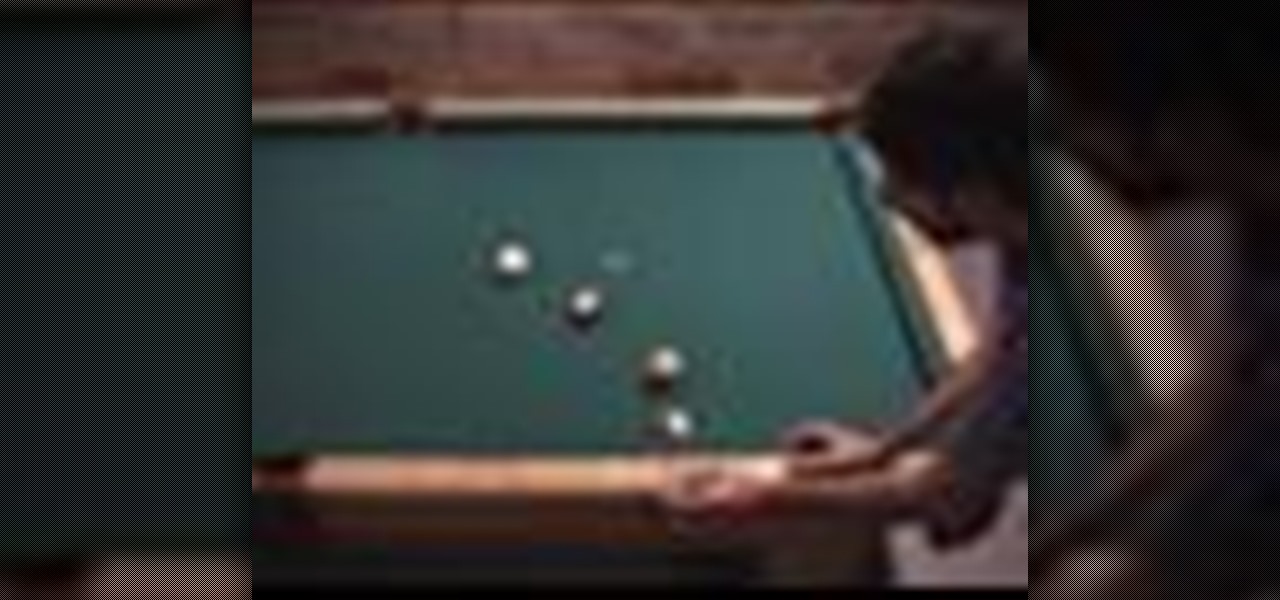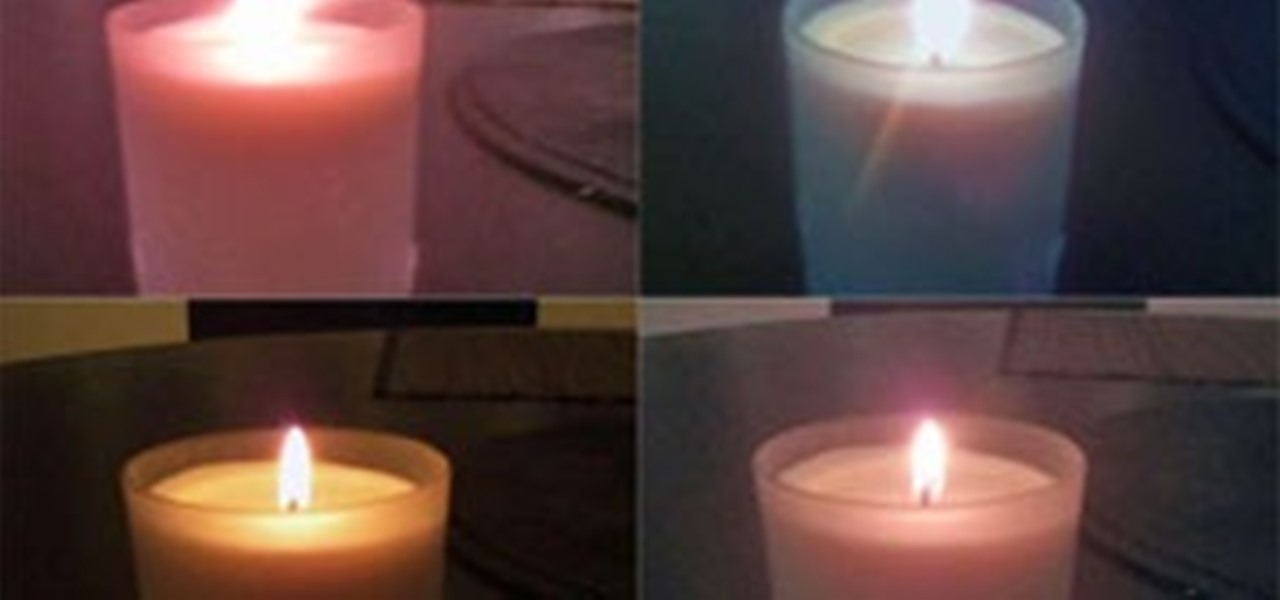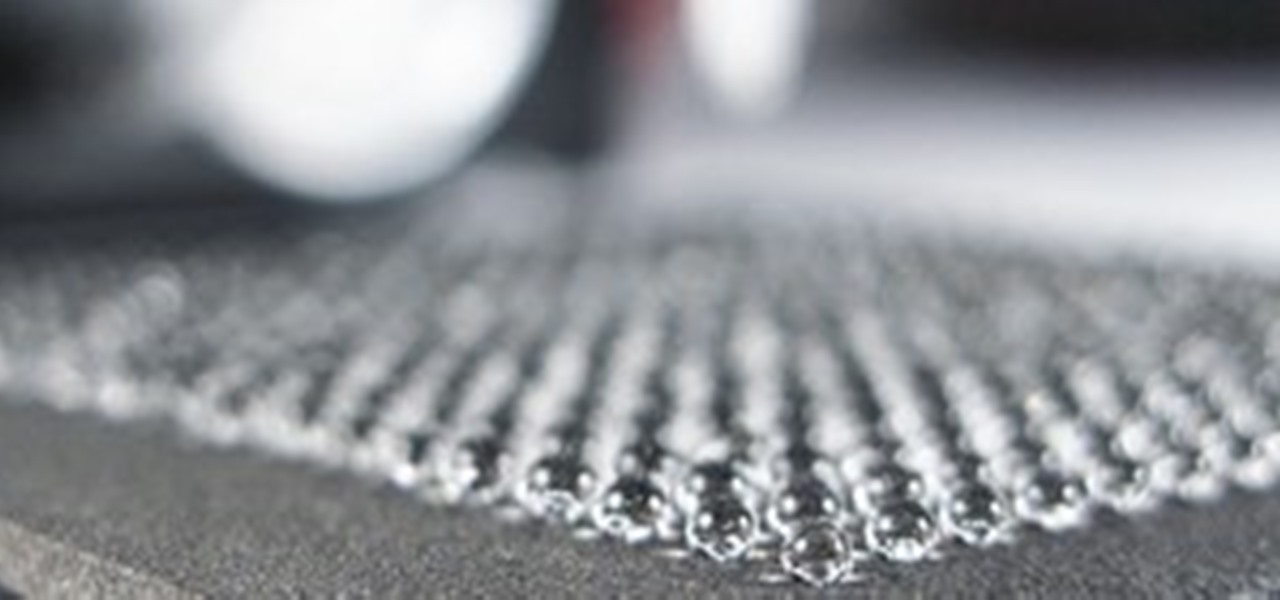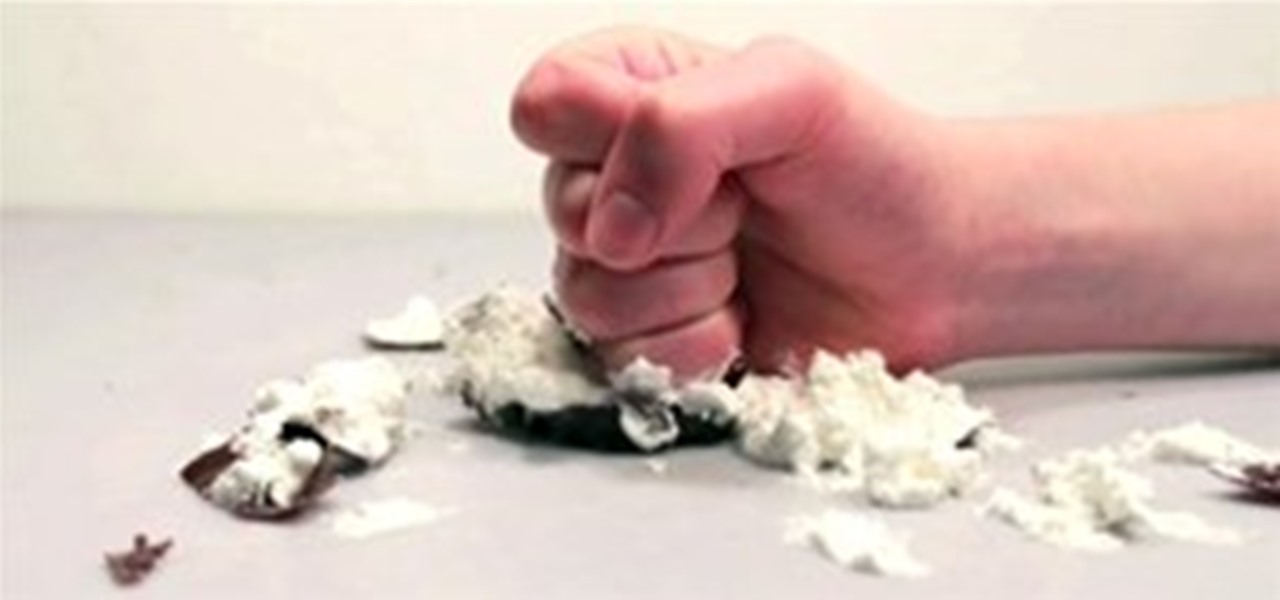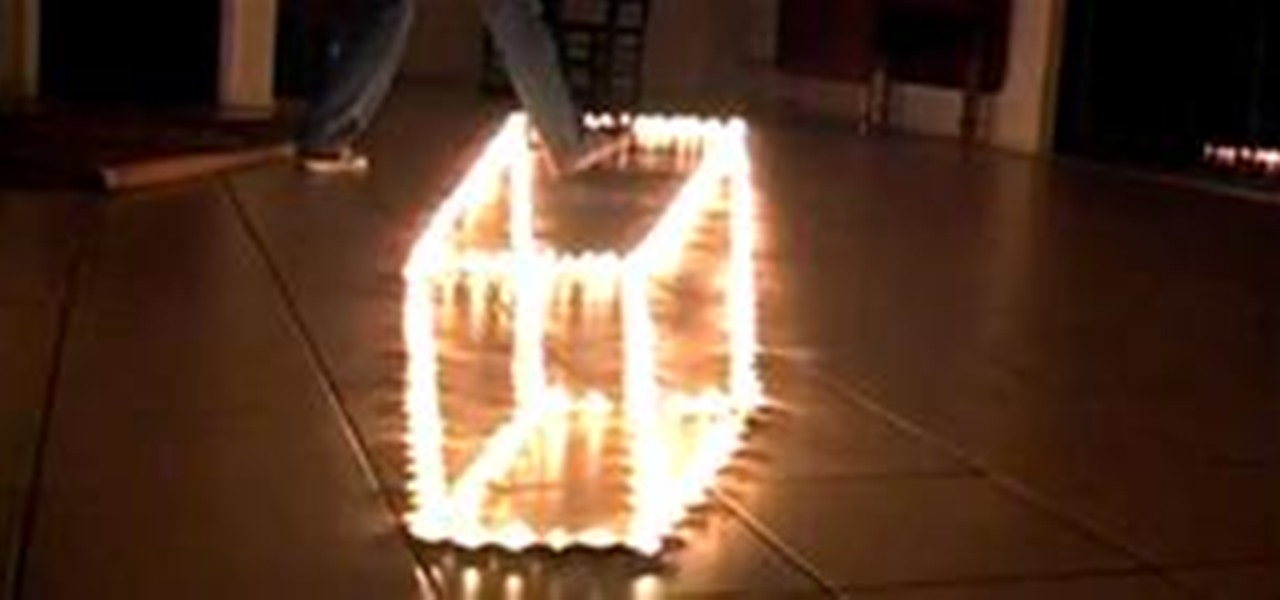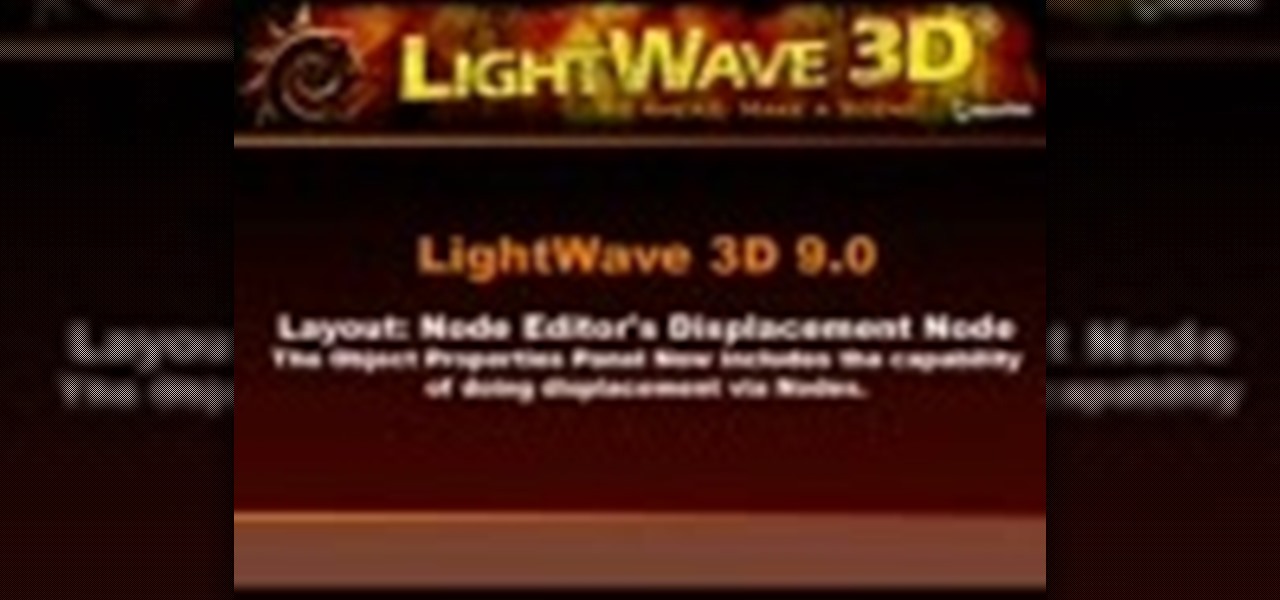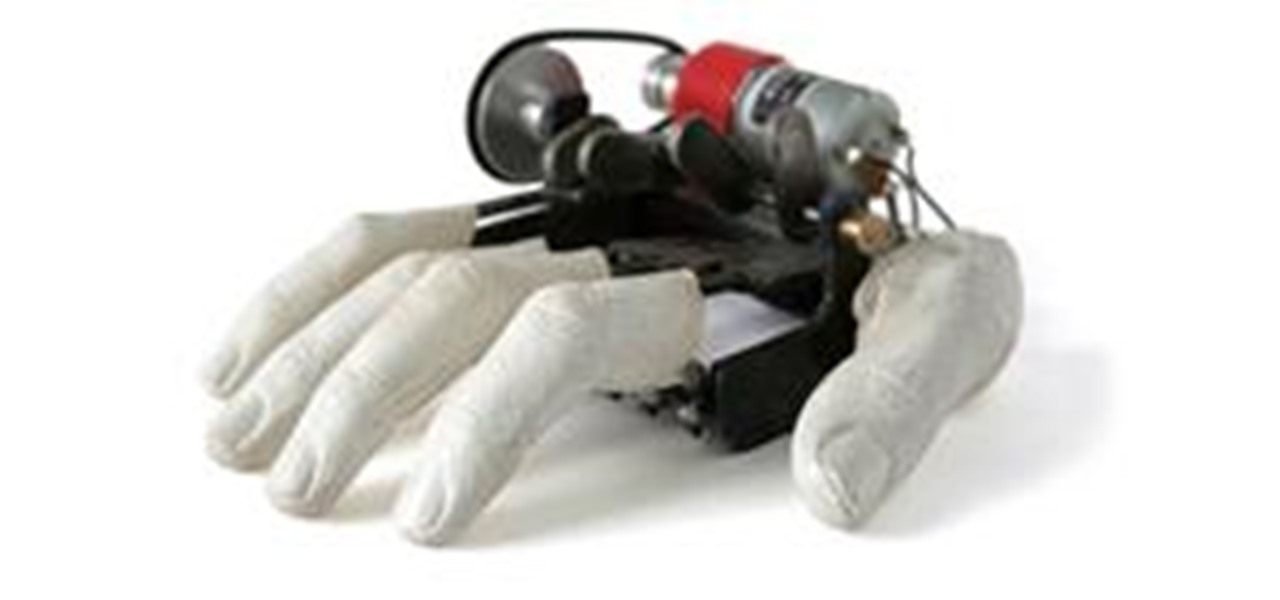
Take a multi-layered document and give yourself a really simple way to view different combinations of different objects in Illustrator. View multi-layered object combinations in Illustrator.

This is a Photoshop tutorial to show you how to remove a person or object from a photo. Use Photoshop to remove an object from an image.

A tic tac is basically just a kick off a wall to provide some height before landing on two feet. This is used to get over various objects that the athlete doesn't want to (or can't) touch. If the object is near a wall, it provides the perfect opportunity to propel themselves over and past the object with a quick kick. Do a Parkour tic tac.

In the instance of all shots being blocked, you can place the cue ball near an object ball, as is shown in this video. This is a safe shot that can potentially make your opponent's next turn very difficult. Freeze a cue ball on an object ball for safety.

A stop motion video simply consists of an object that is physically moved in small increments frame by frame so that when the frames are viewed in sequence, the illusion of movement is created.
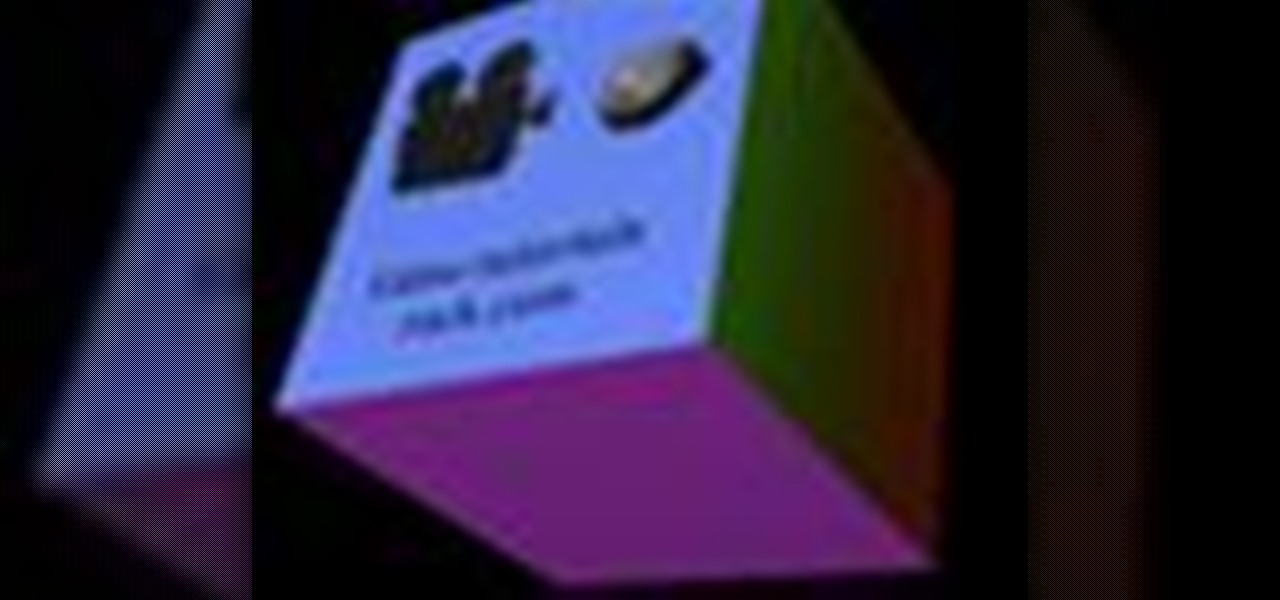
In order to complete this 3D spinning cube using OpenGL and GLUT for C++ programming, you need to know the basics of C++ programming. This video lesson covers everything you should already know. Check out the other videos to get the full gist:

This CAD software tutorial covers how to make face based families, change a family category, and make voids in Revit Architecture. Face based families are pretty handy for a few reasons. a big one though is that they do delete when you erase the host object (this is not the case with wall based and floor based) families. Also face based families are easy to move around, re-host and rotate. See how to create and work with face based families in this Revit Architecture tutorial. Create and use ...

The three step tic tac is the same as a one step, but obviously with a couple of extra steps. A tic tac is used to clear high objects that the athlete does not wish to touch, but has a wall near by which can be kicked off in order to clear the object in question. The three step tic tac provides lots of height so it is possible to clear much taller objects. Do the three step tic tac.

In this quick tip for after effects users, CreativeCOW contributing editor, Bob Thompson creates a complex looking animation using only a camera, 3d layer, null object, and some duplicated layers. In only minutes, you can get an animated look with only one layer to worry about to control the motion. It's a quick fix to let you spend more time on other facets of your project workflow. Create an animation in one layer in After Effects.

This pool shooting video demonstrates how to hit the object ball when an opponent's ball is blocking the shot. Simply visualize an imaginary ball at the rail to achieve the proper angle, moving the object ball away from the opponent's. Use the kick shot mirror image when shooting pool.

This pool shooting video demonstrates how to bank the object ball off the rail into the pocket, when the object ball is at an equal distance from three rails. It also shows how to gauge the shot using the diamonds on the rails. Bank the ball when it is equidistant from the rails.

This pool shooting video demonstrates the best way to use the rails to deflect a frozen cue ball toward the object ball. To unfreeze the cue ball you can deflect it off the opposite rail, then it will deflect off the rail near the object ball and gently knock it into the pocket. Shoot a two-rail kick shot in pool.

In another shot from the film "Pool Hall Junkies" the cue ball is frozen to the object ball. However it is demonstrated how to deflect the cue ball off the opposite rail to pocket the object ball. Shoot a frozen cue ball kick shot.

This video illustrates how to use your own hand to help visualize the 90 degree rule when shooting pool and determine where the cue ball and the object ball will go, so you don't scratch. The thumb and forefinger spread out in an "L" shape will effectively predict the directions the cue ball and the object ball will take. Visualize the 90 degree rule in pool.

In this video you will be shown how to clear a conscious infants foreign object in the airway.You need to recognize choking, perform 5 back blows and 5 chest thrusts. Repeat this procedure until object is expelled or infant becomes unconscious. Clear an infant's airway with CPR.

Want to learn some neat Flash tips? This video shows you how to capture the animation properties of an object as ActionScript code, and then apply the ActionScript to another object on the Stage. Check out this video by Chris Georgenes now! Copy and paste ActionScript from an animation in Flash.

In this After Effects tutorial Creative Cow leader Aharon rabinowitz shows you how to add a motion blur to effects that don't support this feature. Motion blur is key for any fast moving objects or effects and it can often cover up imperfections, so it's an important skill to learn. Also covered is adding blur to video footage that has been sped up, and an introduction to CyCore's updated Effects: CyCore FX HD. Force motion blur on objects in After Effects.

A target camera's view is focused by a target object. Moving or rotating the target camera will cause it to always tilt so that its focus remains on the target. In this 3ds Max video tutorial you will learn how to create and use target cameras. Make sure to hit "play tutorial" in the top left corner of the video to start the video. There is no sound, so you'll need to watch the pop-up directions. Create target cameras in 3ds Max.

Like to draw in Illustrator? This video shows you how to use the Scale, Shear, and Free Transform tools in Illustrator CS3. You also learn how to use the options and modifiers for these tools. Scale, skew, and rotate objects in Illustrator CS3.

Color your Illustrator objects in a whole new way with Live Paint. Learn to convert your art into a Live Paint group and apply colors to various parts of the object, even if there are gaps or complex areas in the paths. Use the Live Paint tool in Illustrator.

This video shows you how to use the 3D camera tools in Photoshop CS3 to navigate a 3D scene. You learn how to orbit, roll, pan, or walk the camera around an object, and how to manage camera settings. This video also contrasts 3D camera tools with the 3D object editing tools. Use the 3D camera tools in Photoshop CS3.

With this simple technique the cue ball will follow the path of the object ball without scratching. If both balls are lined up with the pocket, an off-center hit will help in pocketing the object ball but not the cue ball preventing a scratch and lining up the next shot. Make a straight shot using follow.

This tutorial discusses how to create a comet or an asteroid using different techniques within 3ds Max 2010 or 2011. You'll start by modeling the base object, making a not-so-complex mesh, and then you''ll work on particles. Whether you're new to Autodesk's popular modeling software or a seasoned 3D artist just looking to better acquaint yourself with the application, you're sure to be well served by this video tutorial. For more information, and to get started creating your own 3D space rock...

Let’s explore the new spry form widgets in Dreamweaver CS4. After creating a simple form, use new insert panel to create and customize the spry menu objects. Use the new Live View function to preview how the form will behave on the web. Follow along as Geoff Blake shows you everything new about using spry form widgets in Dreamweaver CS4. Use the new spry form widgets in Dreamweaver CS4.

Creating any object you want is as simple as point and click if you have a 3D printer at home. If you don't have one handy, there are a few companies that offer printing services online. But to help services realize your design in extruded plastic, you have to make a 3D computer model for the printing machine. For beginners, the free Google SketchUp application is the best choice of software. Using only a few tool bar buttons and a scroll wheel computer mouse, you can model literally any obje...

In photography, using filters over lenses is a common practice and provides a great way to set the mood or to create an artistic image. The only problem is that they can be quite costly and there currently aren't many available for cell phones specifially. Fortunately, there is a simple solution to this, and all you need are everyday objects that can be found around the house. If you're a purist and don't want to rely on filters provided by camera apps, this is a great way to experiment with ...

Beauty is a fine line between art and science for Pe Lang, a Swiss sculptor living and working in both Berlin and Zurich. The autodidact artist specializes in graceful, hand-built kinetic sculptures made of magnetic, electrical and mechanical devices, all of which are elegant and completely mesmerizing. "Positioning Systems - Falling Objects" is one of his newest contraptions, which feels like a mix of home waterfall fountains, mechanical metronomes and a busy manufacturing plant.

Why is it so satisfying to squash, snap, squeeze and splatter? You know, squashing a juicy grape, snapping a twig, squeezing ketchup out of a packet—perhaps with your fist—or splattering mud across a sidewalk. But all of these actions are child's play next to animators Laura Junger and Xaver Xylophon's Joy of Destruction. The real joy of destruction is illustrated below—we're talking sawing ladies in half, exploding corn into popcorn with dynamite, burning cities, and rolling over statues wit...
This was a Chicago AR meetup we had where we introduced the concept of using a tablet to view Augmented Reality objects. We used ARSights app for this demonstration. The great thing with this is that there are 10,000's of free models & the ARSights viewer/player is free. It is as simple as downloading the viewer and then playing the file. If you want to create your own models they sell software for that.

Wow. Really fantastic fire illusion by WonderHowTo favorite, BrussPup. Hang in there, the magic starts to happen at 0:34. Previously, Jerry Andrus and His Impossible Box.

The object properties panel in Lightwave 3D 9 now includes the capability of doing displacement and creating displacement via nodes. This video shows you how. Use displacement maps via nodes in Lightwave 3D 9.

The objects you are working on in Illustrator often are not in the exact sizes or shapes you want them to be. In this Illustrator CS2 video tutorial you will learn to scale and skew objects. This is a tutorial for beginners. Make sure to hit "play tutorial" in the top left corner of the video to start the video. There is no sound, so you'll need to watch the pop-up directions. Scale and skew objects in Illustrator CS2.

In this how to you will learn how to measure things indirectly. Indirect measurement is when you calculate something's measurement by measure the shadow. First, all of your measurement have to be taken around the same time. Next, measure your height. After, measure the object's shadow. After put the tip's of your toes on the edge of an object's shadow. Now you just use a proportion to solve what the height is. Here is a link to help you. Indirect Measurement - Math Dictionary.

Los Angeles based artist Mashanda Scott creates soft and squishy sculptures of everyday objects.

Nik Ramage creates low tech, absurd mechanical objects that perform mundane every-day tasks (from blowing out candles to walking down the street to drumming your fingers out of boredom). Click through to Ramage's site to see more of his work. Five of his pieces below:

http://www.seonorthamerica.com Find out what makes for effective website design and how to employ engagement objects.

Still reading? Either your kids are not in diapers anymore or you're just curious. Either way, on to the next category of scavenger hunters.
Setting up shadows takes just as much time and attention as setting up lights. You can think of all of your illumination as one half of your lighting design, and shadows as the other, equally important half. Shadows can add richness to the tones and shading of your image, tie elements together, and improve your composition. Besides their artistic importance, rendering shadows is a key technical area to master. This chapter will explore both the visual and the technical sides of shadows and oc...

Why does the world work the way it does? Linda Dong takes basic scientific principles and translates them into beautifully simple, explanatory images.

Andrew Odewahn of O'Reilly Answers posts a HowTo on creating 3D(ish) images through simple processing. Odewahn employs the practice of stereoscopy (a technique for creating the illusion of depth in a 2D image):











